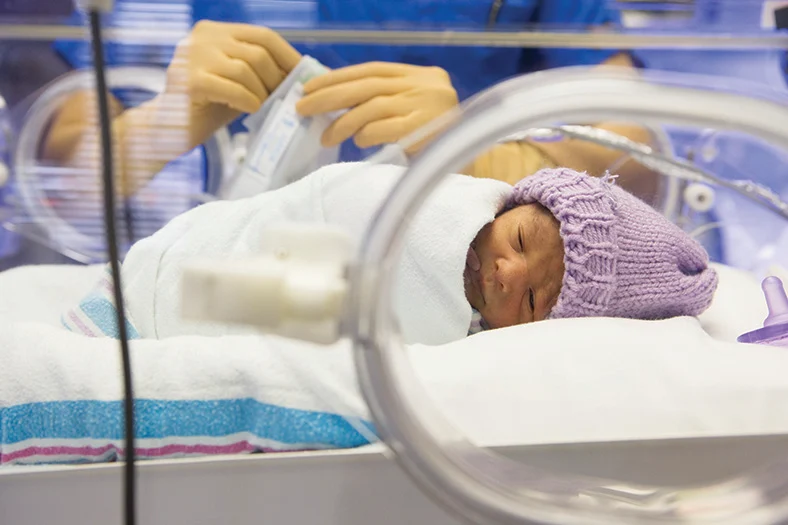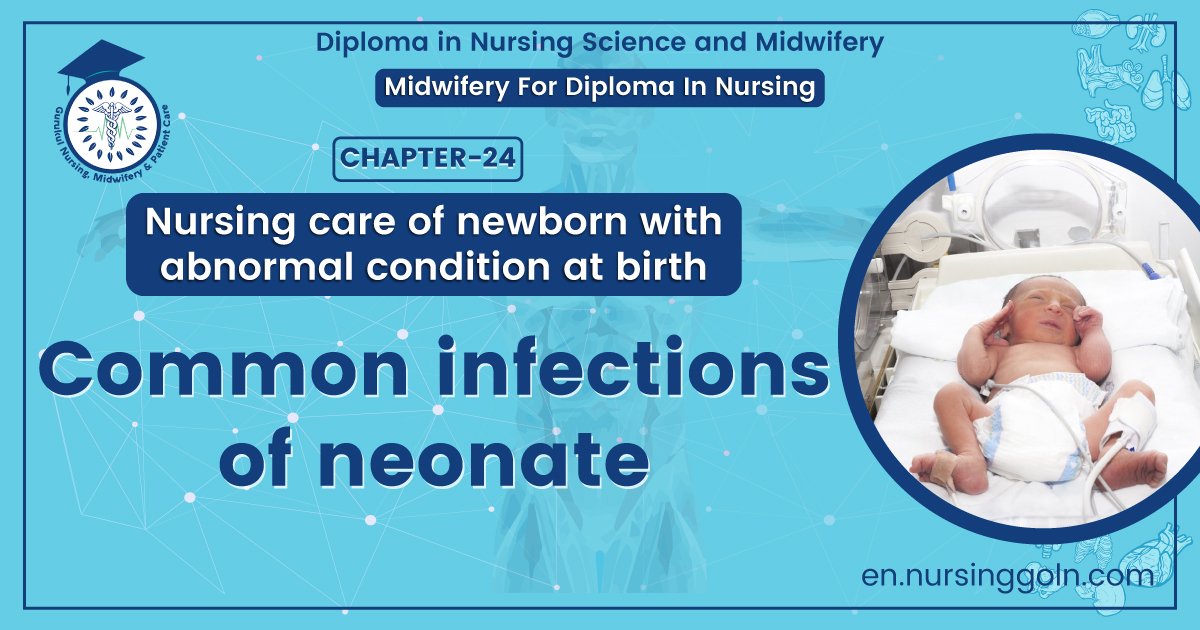Concept about Common infections of neonate – This course is designed to understand the care of pregnant women and newborn: antenatal, intra-natal and postnatal; breast feeding, family planning, newborn care and ethical issues, The aim of the course is to acquire knowledge and develop competencies regarding midwifery, complicated labour and newborn care including family planning.

Concept about Common infections of neonate
Common infections in the neonate
Infection by bacteria constitutes a common morbidity and accounts for nearly one-third of total neonatal deaths. Infections can be-
1. Superficial infections.
2. Systemic infections (neonatal sepsis).
Superficial infections
1. Omphalitis.
2. Local infection.
3. Oral thrush
4. Conjunctivitis.
Systemic infections (neonatal sepsis)
Systemic bacterial infections are known by the generic term neonatal sepsis (NNS), which incorporates –
1. Septicemia
2. Pneumonia.
3. Meningitis

[Ref-Vinod Paul/8h/162-163]
Predisposing factors for neonatal infection
1. Low birth weight / prematurity.
2. Contaminated environments in uterus.
3. Infected birth passages- Infected postnatal environments.
4. Congenital anomalies.
5. Hospital procedures.
6. Artificial feeding.
7. Male sex.
[Ref-Suraj Gupta/11th/220]
Common sites of neonatal infection
The neonatal infections may occur as superficial & localized or systemic. The common sites of infections are-
- Eve: Neonatal conjunctivitis.
- Skin: Rashes & pustules, pyoderma
- Umbilicus: Umbilical sepsis (Omphalitis).
- Oral cavity: Oral thrush.
- Systemic infection include-septicemia, meningitis, pneumonia, tetanus neonatorum, DIC (Disseminated Intravascular Coagulopathy), Pyelonephritis etc.

Prevention of neonatal infection
This may be attained by the following measures:
1. Barrier technique in the nursery.
2. Minimal handiing and hand washing by the staff/attendants.
3. Colonization of the neonate.
4. Cleaning of the nursery.
5. Cleaning and disinfection of the nursery equipment’
6. Surveillance of nursery flora, especially at the time of outbreak of an infection.
7. Antibiotic prophylaxis.
Read More.
